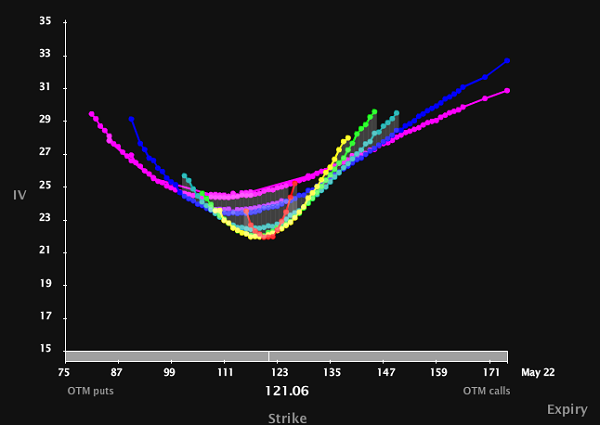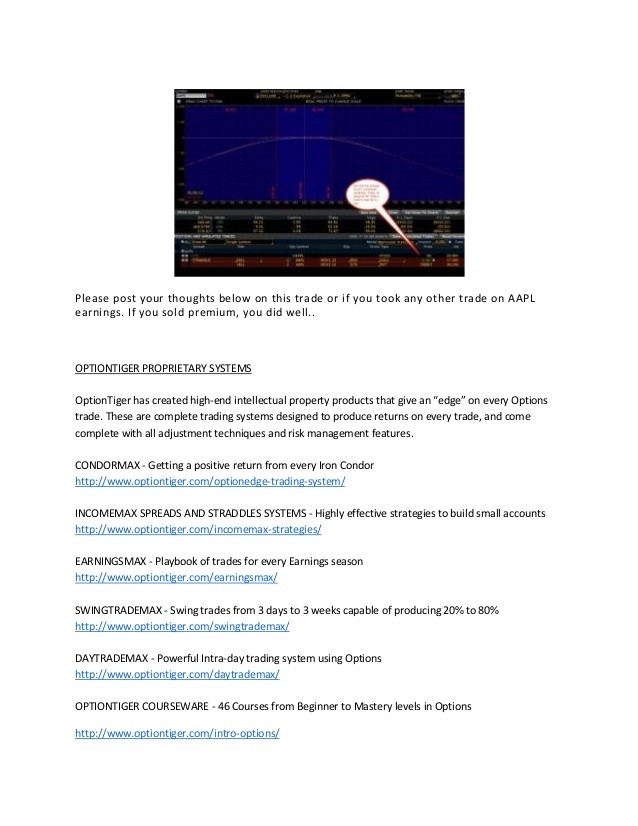Mini Options A Useful Tool For Trading HighPriced Securities (AMZN AAPL GOOG GLD SPY)
Post on: 18 Июнь, 2015 No Comment

Mini options are option contracts where the underlying security is 10 shares of a stock or exchange-traded fund (ETF). This is the main difference between mini options and standard options. which have 100 shares as the underlying security. (See also Minis Provide Low-Cost Entry To Futures Market .)
Basic F eatures of Mini Options
Mini options with physical settlement began trading on the Chicago Board Options Exchange (CBOE) on March 18, 2013, when mini options on the following five stocks and ETFs were introduced:
The options symbol for these mini options is easily identifiable — the number seven is simply appended to the security symbol. Thus, the mini option series for Amazon would start with the identifier AMZN7, while that for Apple would start with AAPL7.
These mini options have physical settlement, which means that the actual shares may have to be delivered if the position is not closed before expiration. Exercise is American-style, which means that they can be exercised on any business day before expiration. (See American Vs. European Options .) Expiration for the mini options is the Saturday immediately following the third Friday of the expiration month, until February 15, 2015. On and after that date, expiration will be the third Friday of the expiration month. Strike prices and strike-price intervals for mini options are the same as for standard options on the underlying security.
There is a sixth mini option that was launched in 2006 with the ticker symbol XSP; it has the “mini-SPX” index – which is one-tenth the value of the S&P 500 (SPX) index options – as its underlying asset. The XSP differs from the five mini options introduced in March 2013 in that like many other index options, it can only be cash settled and exercise is European-style, meaning only at expiration.
The main rationale for the CBOE’s introduction of mini options is that they make it possible to speculate on or hedge fewer shares of the underlying stock or ETF.
For example, a standard option on a stock trading at $100 may be priced at $5. As a standard-option contract represents 100 shares, the option price has to be multiplied by the number of shares represented by one contract; this is known as the option multiplier. In this case, one contract would cost the investor $500. But what if an investor only has 50 shares and wishes to hedge this long option? Acquiring a standard contract means that the investor would be paying a hefty premium for extra protection that he does not need. The mini option is suitable in this case, since the investor can buy five mini-option contracts. Since each mini option represents 10 shares, the option multiplier here is 10.
Consider the $530 April 2014 mini-option call on Apple on March 6, 2014, when the stock was trading at $530.75. The mini option was offered at $14.85, which means that it would cost $148.50 for a contract of 10 Apple shares. The standard contract at the same strike price and maturity was trading at $14.70, which means that it would cost $1,470, or almost 10 times as much as the corresponding mini option.
Note that the multiplier for the XSP mini options is 100. As this option has one-tenth the value of the S&P 500, each mini-option contract represents 10 units of the S&P 500.
Pros and Cons

Mini options have the following advantages:
- Lower outlay. The biggest advantage of mini options is that they require a much lower cash outlay, approximately one-tenth the amount required for a standard option.
- Especially suitable for hedging odd lots. Many investors have odd lots — i.e. fewer than the standard lot of 100 shares — of stocks that trade in the triple digits. Mini options are especially suitable for hedging these exposures most effectively, particularly for strategies like buying protective puts or writing calls where it is necessary to offset the exact number of shares held.
- Good tool for those with limited capital. Mini options are a good investment tool for those with limited capital, such as students and small investors, to trade very high-priced securities.
On the flip side, mini options have the following drawbacks:
- Commissions are higher on a percentage basis. Commissions can really add up when trading mini options. For example, if the commission to put on an option trade through an online broker is a flat fee of $10, and a standard contract (of 100 shares) is trading at $10, the commission works out to 1%. But if 10 mini-option contracts are used instead, the commission would be $100 or 10% of the value traded. Even if only five mini-option contracts are used, the commission still works out to $50 or 5%.
- Wider bid-ask spreads and lower liquidity . Mini options seem to have much wider bid-ask spreads and significantly smaller open interest than their standard option counterparts, which translates into lower liquidity.
- Only available for very limited securities. As of March 2014, mini options were only available for six securities (again, AAPL7, AMZN7, GOOG7, GLD7, SPY7, XSP).
The Bottom Line
Mini options are a suitable tool for trading and hedging very high-priced securities. However, since they are only available on a handful of securities, they may have a limited following until they’re offered on a much wider range of stocks and ETFs.














